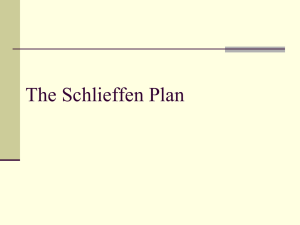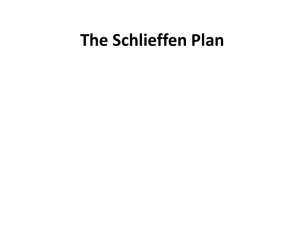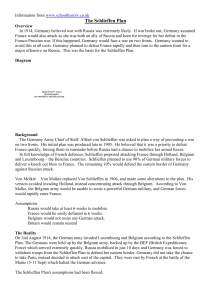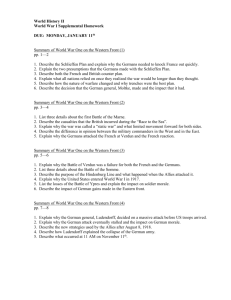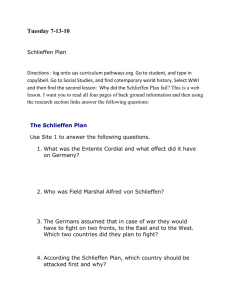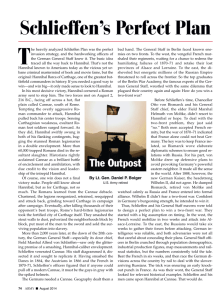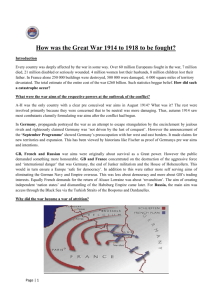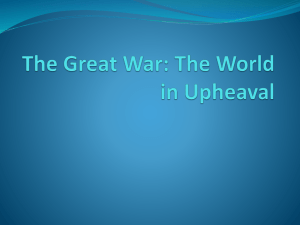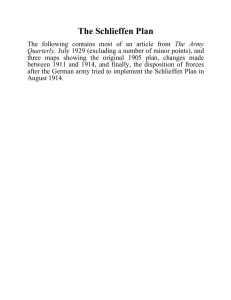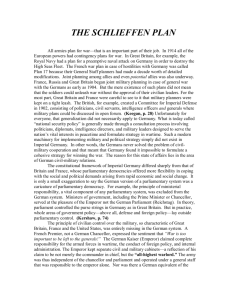Using your own knowledge and the sources
advertisement
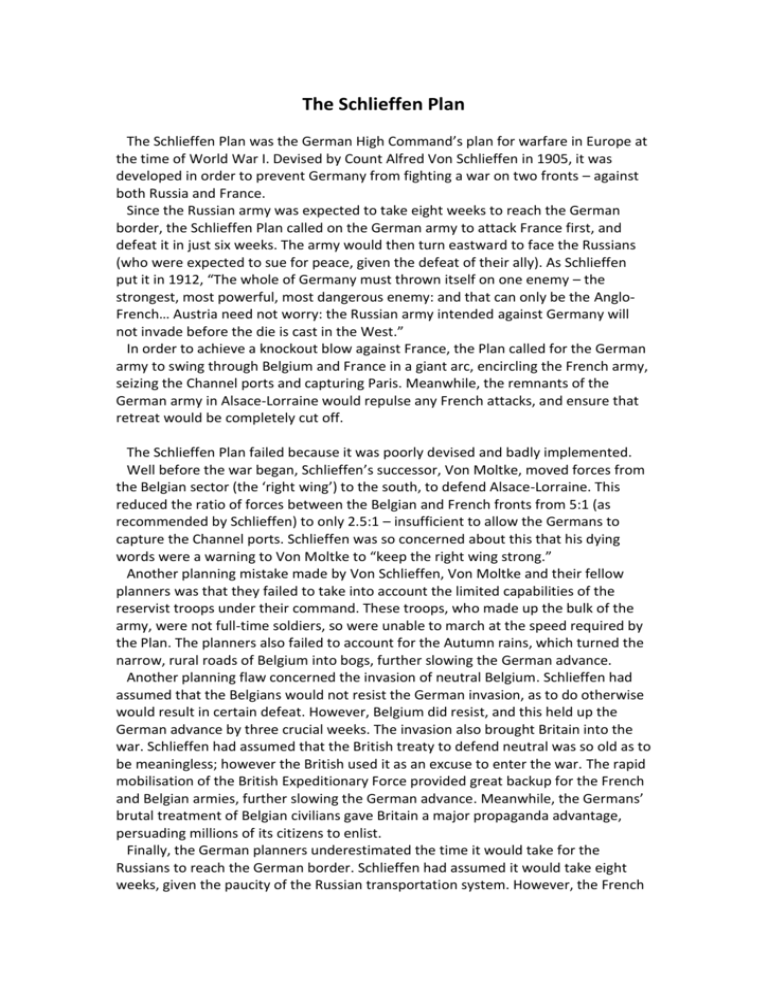
The Schlieffen Plan The Schlieffen Plan was the German High Command’s plan for warfare in Europe at the time of World War I. Devised by Count Alfred Von Schlieffen in 1905, it was developed in order to prevent Germany from fighting a war on two fronts – against both Russia and France. Since the Russian army was expected to take eight weeks to reach the German border, the Schlieffen Plan called on the German army to attack France first, and defeat it in just six weeks. The army would then turn eastward to face the Russians (who were expected to sue for peace, given the defeat of their ally). As Schlieffen put it in 1912, “The whole of Germany must thrown itself on one enemy – the strongest, most powerful, most dangerous enemy: and that can only be the AngloFrench… Austria need not worry: the Russian army intended against Germany will not invade before the die is cast in the West.” In order to achieve a knockout blow against France, the Plan called for the German army to swing through Belgium and France in a giant arc, encircling the French army, seizing the Channel ports and capturing Paris. Meanwhile, the remnants of the German army in Alsace-Lorraine would repulse any French attacks, and ensure that retreat would be completely cut off. The Schlieffen Plan failed because it was poorly devised and badly implemented. Well before the war began, Schlieffen’s successor, Von Moltke, moved forces from the Belgian sector (the ‘right wing’) to the south, to defend Alsace-Lorraine. This reduced the ratio of forces between the Belgian and French fronts from 5:1 (as recommended by Schlieffen) to only 2.5:1 – insufficient to allow the Germans to capture the Channel ports. Schlieffen was so concerned about this that his dying words were a warning to Von Moltke to “keep the right wing strong.” Another planning mistake made by Von Schlieffen, Von Moltke and their fellow planners was that they failed to take into account the limited capabilities of the reservist troops under their command. These troops, who made up the bulk of the army, were not full-time soldiers, so were unable to march at the speed required by the Plan. The planners also failed to account for the Autumn rains, which turned the narrow, rural roads of Belgium into bogs, further slowing the German advance. Another planning flaw concerned the invasion of neutral Belgium. Schlieffen had assumed that the Belgians would not resist the German invasion, as to do otherwise would result in certain defeat. However, Belgium did resist, and this held up the German advance by three crucial weeks. The invasion also brought Britain into the war. Schlieffen had assumed that the British treaty to defend neutral was so old as to be meaningless; however the British used it as an excuse to enter the war. The rapid mobilisation of the British Expeditionary Force provided great backup for the French and Belgian armies, further slowing the German advance. Meanwhile, the Germans’ brutal treatment of Belgian civilians gave Britain a major propaganda advantage, persuading millions of its citizens to enlist. Finally, the German planners underestimated the time it would take for the Russians to reach the German border. Schlieffen had assumed it would take eight weeks, given the paucity of the Russian transportation system. However, the French spent the decade prior to the war financing the construction of railways in Russia, allowing the Russian Army to reach the German border much faster than anticipated. In fact it took the Russians just over three weeks to arrive, forcing the German commander, Von Moltke, to reinforce his eastern positions with troops from the Western front. This key weakness of the Schlieffen Plan led to a crucial blunder. With the right wing weakened, Moltke was unsure if his troops could take Paris. As such, he ordered them to by-pass it, moving to the east instead of to the west. Historians disagree as to whether this was a planning failure on Moltke’s part or an implementation failure on the part of the two German field commanders. Either way, it allowed the French to organise a counter-attack at the Marne River and push the Germans back to the river Aisne. The Germans had now lost their numerical superiority, as well as the initiative; the Schlieffen Plan had comprehensively failed.
